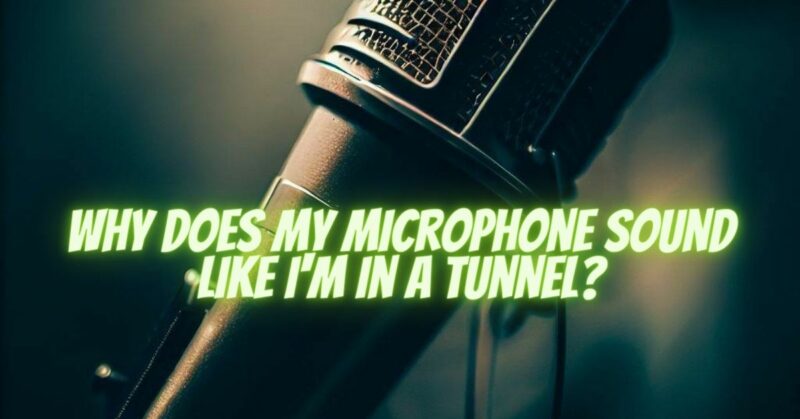Experiencing microphone sound that resembles being in a tunnel can be disconcerting, as it can significantly impact the clarity and quality of your audio recordings or communications. This tunnel-like effect, often referred to as “boxy” or “hollow” sound, can make your voice appear distant or lacking in presence. In this article, we will explore the common causes behind this phenomenon and provide insights into potential solutions to help you achieve a more natural and clear microphone sound.
- Improper Microphone Placement:
One of the primary reasons for a tunnel-like sound is improper microphone placement. When the microphone is positioned too far away from your mouth or placed in an acoustically unfavorable location, it can result in a lack of proximity effect—the natural bass boost that occurs when speaking close to a microphone. This can make your voice sound distant and lacking in warmth. Ensure that the microphone is positioned correctly, with the appropriate distance and angle, to capture your voice effectively.
- Room Acoustics and Reflections:
The acoustic properties of the room where you’re recording or communicating can greatly influence microphone sound. Rooms with hard surfaces, such as bare walls, floors, or ceilings, can cause sound reflections that contribute to the tunnel-like effect. These reflections bounce off the surfaces and reach the microphone with a delay, creating a sense of hollowness. To mitigate this, consider using acoustic treatment, such as foam panels or diffusers, to minimize reflections and create a more controlled recording environment.
- Inadequate Pop Filter or Windscreen:
Pop filters and windscreens play a crucial role in reducing plosive sounds (like “p” and “b” sounds) and wind noise that can contribute to a tunnel-like effect. If your microphone does not have a built-in pop filter or windscreen, or if the existing one is ineffective or damaged, it can impact the clarity of your recordings. Invest in a high-quality pop filter or windscreen that is compatible with your microphone to minimize unwanted air blasts and improve the overall sound quality.
- EQ and Audio Processing:
Sometimes, the tunnel-like sound can be attributed to improper equalization (EQ) or audio processing settings. Overly aggressive high-pass filters or excessive reduction in the low-frequency range can result in a thin and boxy sound. Experiment with different EQ settings, adjusting the bass and treble frequencies to achieve a more balanced and natural sound. Additionally, ensure that any audio processing software or plugins you are using are properly configured to enhance the clarity and presence of your voice.
- Microphone Quality and Frequency Response:
The quality and frequency response of the microphone itself can also contribute to a tunnel-like sound. Lower-quality microphones may lack the clarity and detail necessary to capture your voice accurately, resulting in a less natural sound. Consider investing in a higher-quality microphone with a wide and balanced frequency response that suits your vocal characteristics and recording needs.
Conclusion:
Experiencing a tunnel-like sound from your microphone can diminish the quality and impact of your voice recordings or communications. Proper microphone placement, consideration of room acoustics and reflections, the use of effective pop filters or windscreens, careful EQ and audio processing, and using a high-quality microphone can significantly improve the clarity and naturalness of your microphone sound. By addressing these factors and optimizing your microphone setup, you can achieve a more pleasing and immersive audio experience that eliminates the tunnel effect and allows your voice to shine through with clarity and presence.


